You’ll find tons of articles on this subject or loosely revolving around this subject. The most famous of all is How to increase newsletter open rate “magically.”
We have to understand two things.
First, there’s no magic.Second, the newsletter open rate has a lot to do with what you have written in your past newsletters. The logic is clear. If I have enjoyed newsletters from Product Hunt in the past, there are higher chances I’ll open the next one when I see it.
Rather than focusing on newsletter open rates, let’s focus on some essential aspects. Let’s fix them one by one, and the email open rate will automatically increase.
In this article, we will talk about the three most important parts of any newsletter. If we fix them, we will eventually gain a higher open rate.
Table of Contents
Three important parts of any email newsletter
The subject line
The content
The design
Newsletter’s resemblance with your brand
Set the blocks very mindfully
Length of the newsletter
Improving is a big part of your success
Final Words
Three important parts of any email newsletter
The subject line
The content
The design
Makes a lot of sense, doesn’t it?
Let’s understand each of these parts and fix them one by one.
The subject line
Let’s be honest for a second. If the subject line is not enticing enough, the email won’t get opened in the first place.
And you won’t have that magical open rate.
Cole Schafer from Honey Copy pays close attention to subject lines. He started using enticing and click-worthy email subject lines in his newsletters and eventually sold $15,000 worth of copywriting guides.
So what makes a subject line click-worthy?
There are many theories on the subject of “the subject line,” but here’s everything you need to know:
“Something uncommon.”
Yes, click-worthy subject lines are always uncommon.
Let’s not confuse “clickbaity” with “click-worthy.”
The difference can be understood by actually reading the content. A clickbaity subject line leads to content that does not go well with the subject or feels suspicious. The purpose of that content is not to inform but to sell something doubtful or attract you in a negative direction.
Something like “How This Man From Arizona Made $2 Billion in a Week!”
And you end up reading about an age-old pyramid scheme.
A click-worthy subject line draws attention. To be precise, it stands out from the rest of the emails in the inbox. It attracts you to open that email and gives you valuable takeaways from the content.
Let’s get back to our statement: “Something uncommon.”
While the entire world uses obvious subject lines, you can create a unique one that makes people open your newsletter so they can read your content.
I have been a fan of SEMrush newsletters, but sometimes I miss the good ones. SEMrush makes sure that I read their emails. Here’s a solid example: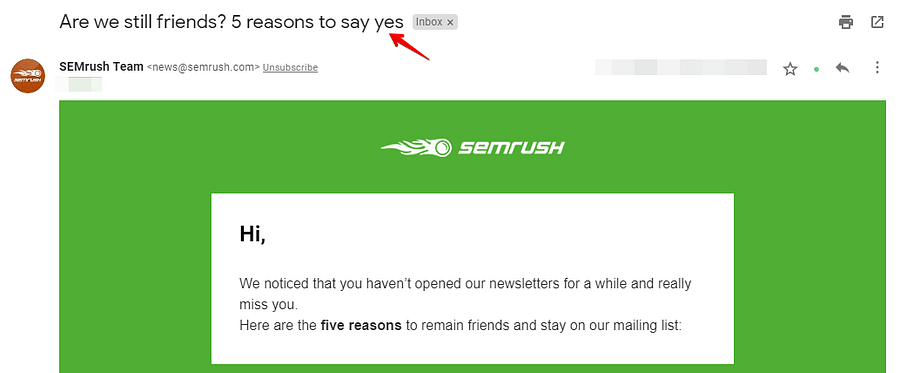 Here are some
Here are some
Successful examples of email subject lines from famous brands:
• 9 Disgusting Facts about Thanksgiving – Eat This Not That.
• Deals That Make Us Proud (Unlike Our Nephew, Steve) – Groupon.
• Boom shakalak! Let’s get started – TicTail.
• Try To Avoid These 27 People On New Year’s Eve – Thrillist.
• Look what you did, you little jerk… – The Hustle.
Statistically, personalized email subject lines with names can get an open rate of 10 to 14 percent across industries. You can use prospect names in the right place to improve your email open rate quickly.
A quick tip: Use emojis wherever you can. When people check their inbox, the one with an emoji stands out. 😋
The Content
This leads to the second, and probably the most important, factor – the content.
It’s the content that makes people stick to your newsletters. As I said, your newsletter open rate has a lot to do with what you have already delivered.
If the audience does not find your content worth reading, they will not waste a single second on your email.
Make sure of the following when it comes to newsletter content:
• The content must make sense and deliver the message clearly (context).
• The audience must have at least one actionable takeaway from the content.
• Give the right links at the right spots (website, social media, sign-up, etc.).
I enjoy the weekly newsletters from Product Hunt. They have all the right things in the right places. Here are some of the things I love about PH newsletters:
• The content is easy to read and clearly explains a new product or technology.
• Valuable resources are included (blogs, discussions, product link, podcast, etc.).
• Clickable actions are available. If I want to know more about the subject, the CTA is always available.
• Excellent use of GIFs to highlight trending products.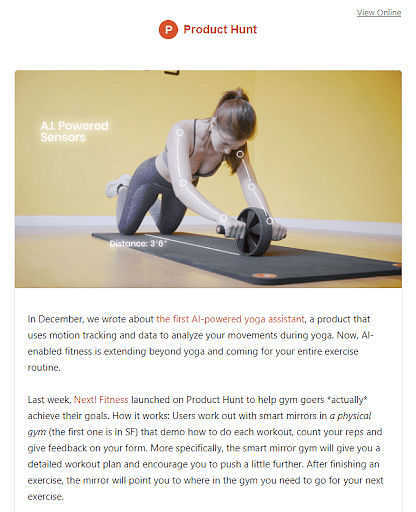 Think like a reader and ask yourself:
Think like a reader and ask yourself:
• What did I learn from this piece of content?
• Where should I click to know more about the subject?
• How can I learn more about this brand?
It is important to pass your message, but it is also important not to reveal everything in the newsletter. You want to drive traffic from emails to your website.
The design
Design is the third most important element in a newsletter.
People like to see attractive things. That’s one reason why the cosmetic industry makes so much money.
Design can be the reason people regularly check out your newsletter. When the right content meets the right design, it is magic.
Maybe that’s the magic you’re looking for.
Here’s a good example from a marketing tool called Later: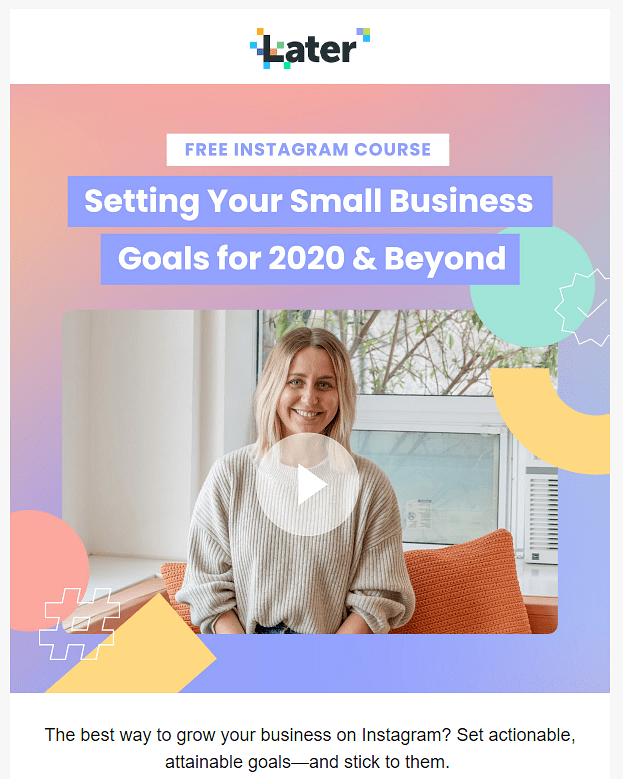 If you are designing a new template or optimizing an old one, keep these points in mind:
If you are designing a new template or optimizing an old one, keep these points in mind:
• The newsletter should resonate with your brand (website, web app, or channel).
• Design the blocks mindfully based on how many items you want to showcase.
• Consider the length of the newsletter. You don’t want people to scroll like it’s an article.
Let’s take an example for each point.
Newsletter’s resemblance with your brand
Newsletter’s resemblance with your brand
The design of your email newsletters should always remind readers of your brand.
For example, you can clearly relate the snapshot below with the famous meditation app Calm. Whether it’s the font or the CTA, the reader will feel a sense of belonging to the brand.
The logic is to set the user in a definite headspace. When a prospect identifies an email from Calm, they should feel the same as when visiting the site. It’s like inviting the prospect into your world.
And you would carefully craft your world, wouldn’t you?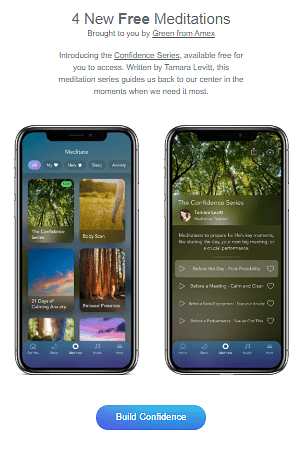 Set the blocks very mindfully
Set the blocks very mindfully
You can show multiple things in a newsletter.
Maybe you have created seven articles in a week and want to display all of them in a newsletter.
Highlight things the prospect might be most interested in. For example, Netflix showed four shows but highlighted a personalized one for the user.
Netflix has mindfully shown trending shows on the platform, yet given more emphasis to a show that the user watched previously.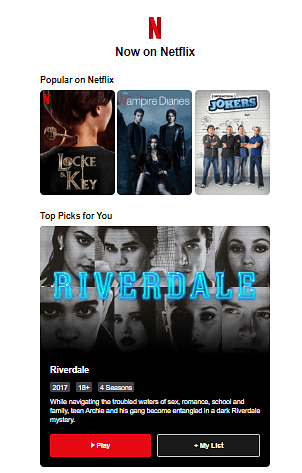 Length of the newsletter
Length of the newsletter
A scroll or two is enough. After that, I would call it a blog.
The purpose of newsletters is to show a gist of your content so the prospect gets excited and moves forward to consume more.
Quora is brilliant in this aspect. Quora sends newsletters with questions based on your interests and shows the initial lines of the answer. Naturally, I want to read more, so I click.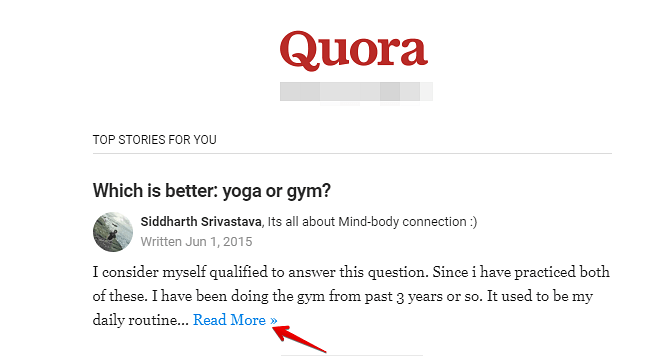 Improving is a big part of your success
Improving is a big part of your success
It is important to focus on the subject line, content, and design, but it is also important to keep evolving.
Your first email shouldn’t be the same as your hundredth. You have to evolve with what readers are looking for.
That’s when things like open rate and click rate come into the picture.
When you send out the newsletter and have low open rates, work on your subject line.
When the open rate improves but you don’t get enough traffic to your website (click rate), work on the website design, content, and link placement.
This journey can be overwhelming, which is why you need smart tools to assist you.
Email marketing tools like SendX can help you manage your campaign with insightful data. You can execute, optimize, and re-execute newsletters to your audience with SendX.
Once the audience is interested in your newsletters and realizes that you can be the right business partner, you have successfully started the customer funnel. This is where you need smart CRM software to manage your leads efficiently.
Final Words
Warren Buffett, the Founder of Berkshire Hathaway and one of the richest men in the world, has created a unique image in the business world. He has built such a strong email newsletter presence that it has become necessary for any investor to follow Berkshire Hathaway’s newsletters.
The point is, email newsletters are no joke. They are worth much more than branding and can drive real business.
I sincerely hope these tips help you build a stronger email chain and eventually a solid customer base.
Cheers!